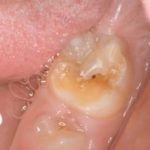
Molar Incisor Hypomineralisation (MIH) is defined as an enamel defect in the mineralisation of one to four permanent first molars, sometimes associated with similarly affected permanent incisors. Clinically MIH affected teeth display a demarcated opacity on the occlusal and buccal surfaces of the crowns, which varies in colour (white, creamy, yellow, or brown asymmetrical opacities) and size (greater than one mm), with the affected teeth often more sensitive to thermal stimuli. Non-fluoride associated enamel defects are considered to be an increasing clinical problem.
The aim of this review was to assess the global prevalence of MIH, including gender, age continent, and country distribution differences.
Methods
Searches were conducted in the PubMed, Web of Science, Science Direct, Chinese Biological Medical Literature database (CBM), Chinese Wanfang database, and Chinese National Knowledge Infrastructure (CNKI) databases. Original population-based studies of MIH that described diagnostic criteria and provided prevalence estimation or data that could be used to calculate it and published in English or Chinese were considered. Two reviewers independently screened the studies and abstracted data. A random effect model was used to summarise the prevalence of MIH.
Results
- 70 studies involving a total of 89,520 people and 10,823 cases were included
- The reported prevalence of MIH among70 individual study populations ranged from 0.5% to 40.2%.
| Pooled prevalence (95%CI) | |
| Overall | 14.2%, (12.6 – 15.8) |
| South America | 18.0%, (13.8 – 22.2) |
| Oceania | 16.3%, (12.6 – 20.0) |
| Europe | 14.3%, (12.2 – 16.3) |
| Asia | 13.0%, (10.5 – 15.5) |
| Africa | 10.9%, (4.2 –1 7.6) |
| Male | 14.3%, (12.0 – 16.6) |
| Female | 14.4%, (12.8 – 15.9) |
- There was no significant difference between males and females
- The prevalence of MIH among children 10 years of age or younger (15.1%, 95% CI: 12.1–18.2) was much higher than that among older children (12.1%, 95% CI: 8.0–16.3)
Conclusions
The authors concluded: –
MIH has a high incidence globally, especially among children <10 years old. It is, therefore, imperative to develop more appropriate dental healthcare strategies to care for these children and to identify the aetiology of MIH to prevent it occurring.
Comments
The authors have searched a broad selection of databases and restricting selection to two languages (English and Chinese) so relevant publications in other language may have been missed. However, a large selection of studies has been included although the authors analysis suggest that publication bias is likely which may have a bearing on the prevalence estimates. No assessment of the individual study quality was presented and significant heterogeneity was noted across the studies (I2 = 98.8%, P < 0.001) meta-regression suggested that study sample size had a significant impact on this with sample sizes in individual studies ranging from 154 – 4989. Overall this review provides a helpful overview of MIH prevalence.
Links
Primary paper
Zhao D, Dong B, Yu D, Ren Q, Sun Y. The prevalence of molar incisor hypomineralization: evidence from 70 studies. Int J Paediatr Dent. 2017 Jul 21. doi: 10.1111/ipd.12323. [Epub ahead of print] PubMed PMID: 28732120.
Other references
Dental Elf – 18th Nov 2016
Dental Elf – 18th Nov 2016
Molar incisor hypomineralisation- review suggests link with childhood illnesses
